Iranians Embarked On Another Epic To Bright Future - Exiled Prince
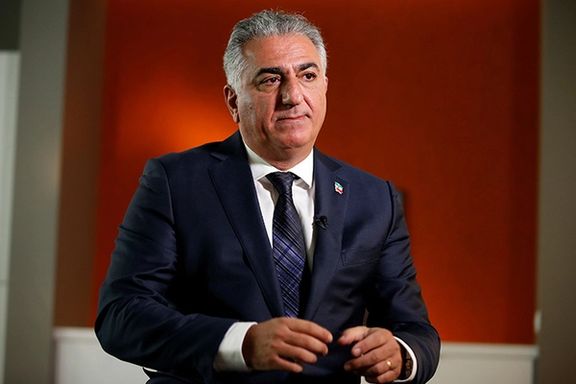
Iran’s exiled Prince Reza Pahlavi addressed the Iranian people Thursday, lauding their efforts in the way to another ‘revolution’ and hoping for a bright future for the country.

Iran’s exiled Prince Reza Pahlavi addressed the Iranian people Thursday, lauding their efforts in the way to another ‘revolution’ and hoping for a bright future for the country.
In a video message, he said Iranians have embarked on “another epic” on the 40th day of their “revolution,” referring to the nationwide rallies that were held to commemorate the 40th day since the death in custody of 22-year-old Mahsa Amini that ignited the current wave of protests. “You, my compatriots, on the 40th day of your revolution have begun another epic.”
He also honored Cyrus the Great -- the founder of the first Persian empire, the Achaemenids – saying that “As an Iranian I am proud that our nation, at the direction of Cyrus the Great, became the first cradle of human rights in the world. Yet our nation’s current rulers have the greatest animosity for human rights and freedom.”
“Let us, by honoring Cyrus the Great, take an oath with our nation and its bright future that Iran will once again be an exporter of the principles of human rights and an example for all the world,” Pahlavi said.
Scheduled nationwide protests in Iran on the 40th day of Mahsa Amini’s death started before noon Wednesday, October 26, with a large gathering at her grave in her hometown of Saqqez and lasted well into the night in many cities across Iran. The 40th day of a loved one’s death has a special significance in Iran, and in case of an unjust killing, the occasion turns into public mourning and fuels angry protests.

The nationwide protests going on in Iran for more than 6 weeks have not stopped factional infighting among the country’s politicians and political groups.
Although following the 2021 presidential election only conservatives have remained on the political scene, still various groups among them are competing fiercely to win the lion’s share of power and financial resources.
The general belief was that the so called “revolutionaries” have the upper hand in Iran’s domestic politics after takeover of parliament and the presidency in 2020 and 2021. However, it appears that there are super ‘revolutionaries’ who want to grab the power from the clutches of those we knew so far as ‘revolutionaries.’
Several Iranian news outlets in recent days have quoted Gharn-e Now website as having reported that it was Majles Speaker Mohammad Bagher Ghalibaf who first revealed that super-revolutionaries have been posing a challenge to other conservatives.
More recently, Mohammad Sadegh Tavangar a lawmaker close to Ghalibaf wrote in a commentary on the government-owned news agency ISNA’s website that hardliners such as Mohammad Sadegh Koushki and Amir Hossein SabetIi are the leading figures of this group that have been trying to undermine the authority of politicians in the conservative camp, particularly the so-called neo-cons led by Ghalibaf.
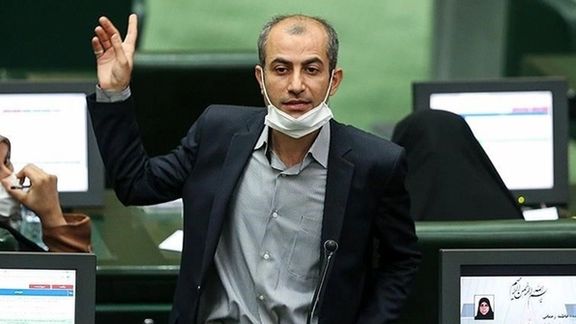
These individuals are linked to hardliner former nuclear negotiator Saeed Jalili. Ghalibaf recently lashed out at this group without naming Jalili and accused them of “opening their mouth and saying anything and doing anything without calculating the consequences of their behaviour.” He called these individuals super-revolutionaries borrowing a label Supreme Leader Ali Khamenei earlier put on pseudo-revolutionaries. Ghalibaf said, “They have never done any serious work, but they behave in a way as if all of us owe them something.” This looked like a characterisation of Jalili, a presidential candidate who was defeated by others at least twice. “If you never write something, no one knows how many mistakes you can have in a sentence,” said Ghalibaf.
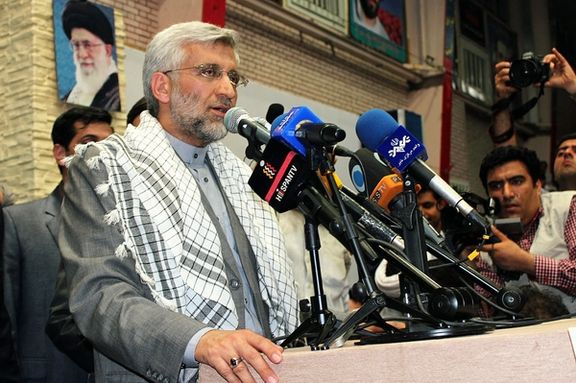
The Majles Speaker has experienced competition from super-revolutionaries associated with the ultra-conservative Paydari party during the Majles elections of 2020 and the presidential election of 2017. He still remembers how they undermined his upper hand in 2017 and put forward Ebrahim Raisi as their candidate, who at the end of the day lost the election to moderate conservative Hassan Rouhani.
In recent months, inside the Iranian parliament, the so-called super-revolutionaries have attacked Ghalibaf several times, the last time by engineering revelations about his family’s controversial shopping trip to Turkey.
More recently, those close to Ghalibaf have accused the super-revolutionaries in and out of parliament of causing the ongoing unrest in Iran with their hardline positions and behaviour that have annoyed all walks of life, particularly women and the youths. The Ghalibaf camp’s attacks directly target individuals such as Saeed Jalili and those close to him. Tavangar in his commentary in ISNA, has finally named Amir Hossein Sabeti a showman on the state TV who has annoyed almost everyone both on TV and on social media, particularly Twitter. Koushki has done the same as a frequent contributor to those programs. Tavangar said that the duo had an active part in radicalizing Iran’s hardliners.
Sabeti’s tweet on October 26, in which he accused Iranian protesters of having the blood of the victims of the terrorist attack on a mosque in Shiraz on their hands, seriously annoyed and angered many Iranians.
Tavangar wrote, “They want to force more devolved individuals to leave the train of the Islamic revolution by levelling accusations against them, but we will not allow them to do so.”
Meanwhile Tavangar harshly criticised Jalili for keeping silent about the ongoing protests for longer than a month.”
Tavangar also criticised the ultra-Conservative party for radicalizing Iranian youths by furthering an initiative to ban social media and for not being accountable for its actions.
The infighting may also signal the neo-cons’ attempt to save their faction before the unrest brings down everyone currently in power in Iran.

Iran's security forces opened fire Thursday on mourners at a cemetery in Lorestan province to mark the 40th-day memorial for a young protester, Nika Shakarami.
The 16-year-old Nika Shakarami’s body was found in suspicious circumstances ten days after she left home to take part in a protest rally against compulsory hijab on September 20.
The last time she spoke to anyone, she was on the run from security forces chasing her on motorbikes. Authorities claimed that she was thrown off a roof or jumped to her death after taking part in the protests.
The teen’s aunt, Atash Shakarami, announced Wednesday in an Instagram post that the family would gather at the cemetery where she is buried to mark her 40th-day memorial. A huge crowd of people gathered Thursday at the cemetery in Veisyan village near Khorramabad where she was buried to commemorate her on day 40th of her death, which is a long-held tradition in Iran
So far around 250 have been killed by security forces, nearly a hundred of whom were killed in one day in Zahedan, Sistan and Baluchestan province when security forces opened fire on a crowd returning from Friday prayers on September 30. In the coming days there will be several such ceremonies every single day in various parts of the country for other victims.
As seen in videos posted on social media, security forces used tear gas and shot at participants in the ceremony in Veisyan.

Videos on social media show the mourners holding photos of Nika and chanting “Khamenei will be overthrown in this bloody year,” “We are all Nika, Fight us and we will fight back,” “Death to the Dictator,” “Death to Khamenei,” and “They took Nika away and brought her body back to us.” Videos also show people throwing stones at the security forces and singing a famous Luri folk song with the chorus “It's Time for War.”
This was the second 40th day memorial for the victims of government violence in protests triggered by Mahsa Amini’s death in police custody on September 16 . Huge crowds marked Mahsa’s own 40th-day memorial in her hometown of Saqqez and many other cities on Wednesday.
Nika’s mother was not informed of her death for ten days. Authorities claimed Nika’s body was found in a courtyard at the back of a building on the morning of September 21 but had not been identified. They initially claimed she had been pushed to death from the roof and it “had nothing to do with the protests.” A report by state media later quoted a Tehran prosecutor as saying that Nika had committed suicide.
Nika’s aunt, Atash Shakarami, and her uncle were arrested by security forces for publicly speaking about the suspicious manner of Nika’s disappearance and death.Both were forced to appear on the state television to corroborate the official account of the teen’s death.
On Thursday, CNN published an exclusive investigation into Nika’s death. CNN said it received several videos and had eyewitness accounts that suggested Nika was chased and arrested by security forces on the night she disappeared. The video showed Nika ducking behind a vehicle shouting to the driver not to move to shield herself from security forces chasing her.
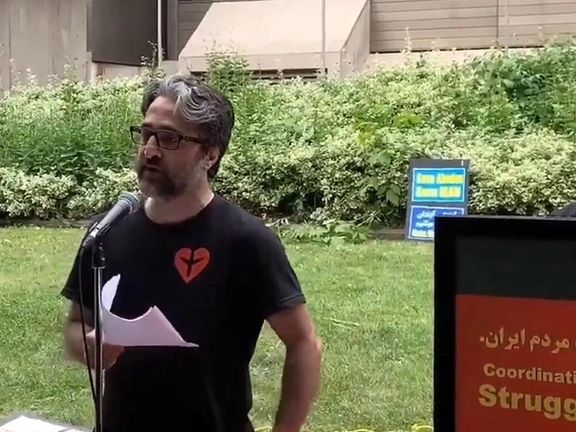
Canada-based activist Hamed Esmaeilion has called for unity among all the groups and peoples protesting against the Islamic Republic, noting that all Iranians face a common enemy.
Esmaeilion, who lost his daughter and wife in the shooting down of a Ukrainian passenger plane in January 2020 by the Revolutionary Guard, said in a statement on Thursday that "When all ethnic groups stand together in front of a common enemy, Iran is the main issue."
Urging all Iranians to participate in the worldwide protest rallies scheduled for October 29, he said that "Don't forget that the Islamic Republic is the main killer, assassin and oppressor.”
Tens of thousands of Iranians, estimated to be over 100,000 people, took to the streets in the German capital Berlin to support their fellow-countrymen struggling against government brutality.
Protesters carried the pictures of Mahsa Amini, the 22-year-old woman who was killed in the custody of Iran’s ‘morality police’, as well as those who lost their lives in the nationwide protest movement since mid-September. They also unfurled a large Iranian pre-revolution national flag, which has become a symbol of rejecting the Islamic Republic.
Addressing the rally Berlin, Esmaeilion said, “We have a dream which will be realized with the fall of Khamenei's empire of fear and crime. In this dream, wind will blow through women's hair, and no one will attack schoolgirls.”

Following the Wednesday attack on a shrine in Shiraz, Russian President Vladimir Putin has expressed Moscow's readiness for further cooperation with Tehran on ‘counter-terrorism issues.’
Putin sent his condolences to his Iranian counterpart Ebrahim Raisi in connection with the terrorist attack in Shiraz in a message published on Thursday on the Kremlin website.
"Please accept my sincere condolences on the tragic consequences of the terrorist act in Shiraz. It is hard to imagine a more cynical crime than the killing of civilians, including children and women, inside the walls of a religious shrine. We have once again seen that terrorism violates not only laws but also human morals," Putin said.
Putin’s vows for support against terrorist activities in Iran can be construed as a greenlight to support the Islamic Republic in its crackdown on the antigovernment protests that have engulfed the country since the death in custody of 22-year-old Mahsa Amini.
In addition to Iranian authorities such as the Supreme Leader and President Ebrahim Raisi, several other supporters of the regime in Tehran are trying to link the terrorist attack to the ongoing protests but many Iranians are not convinced the regime had no part in it, saying it is a scenario for cracking down harder on protesters.
Earlier in the day, the secretary general of Iran-backed Lebanese group Hezbollah said those fanning the flames of recent riots in the Islamic Republic are responsible for the horrendous attack that killed at least 15 people.
On Thursday, the White House also expressed concerns that Russia may be advising Tehran on best practices to suppress the ongoing protests in Iran.
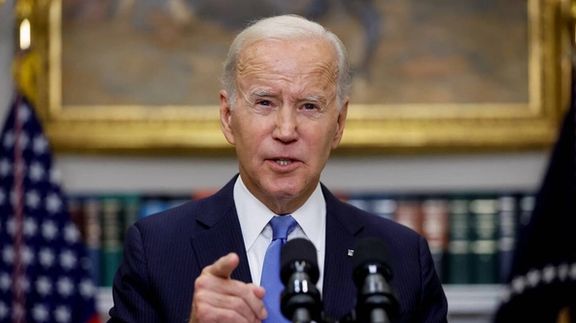
The US State Department Wednesday refused to characterize the demand of Iranian protesters as regime change after days of controversy and campaigns by activists.
On October 23, US Special envoy for Iran Rob Malley sent out a tweet that became a source of controversy and triggered a strong backlash from Iranian-Americans and others. Malley wrote that protesters in Iran wanted “their government” to respect them and safeguard human rights, while clearly, they simply reject the Islamic Republic and want a secular, democratic government.
Iranian activists began an online campaign against Malley, even demanding his resignation.
Malley on Monday admitted that his choice of words was wrong, in an interview with Iran International, and the new line from the State Department became, “We cannot speak on behalf of Iranian protesters.”
Reporters on Wednesday asked the deputy spokesperson Vedant Patel again how the US would characterize the demands of the protesters, or what is the US government’s understanding about their demands.
Patel, again avoided an answer, saying that no one in the US government “should claim or can claim to speak for these protesters; only they can do that. And we, our role is to continue to take steps and take practical efforts to use the tools at our disposal to hold the regime accountable for what we are seeing happen across Iran.”
But pressed further, Patel did begin to characterize the aspiration of the Iranian protesters. “What we are seeing is the Iranian people demand basic human rights, rights of expression, as this started in the death of Mahsa Amini, and we’re seeing the Iranian people make their voices heard. But I don’t have any other specific assessment to offer.”
Saying that the Iranian people want “basic human rights” is not much different from what Rob Malley said a few days earlier.

Meanwhile, Iranian activist and women’s rights advocate Masih Alinejad has launched an online petition demanding Malley’s resignation that has collected nearly 100,000 signatures.
Tehran has been claiming from the start of the protests that the United States and “other enemies” are behind the unrest, because Iran has become “too powerful,” as President Ebrahim Raisi said this week, and they want to weaken it.
It is not clear if the Biden Administration is concerned that if it speaks about the real demand of the protesters, it might help Iran’s unsubstantiated claims, or it is just loath to uttering ‘regime change’, a term more popular with the former Trump administration.
Former President Donald Trump who pulled the United States out of the Obama-era nuclear deal with Iran imposed ‘maximum pressure’ sanctions on Tehran and his administration officials had no qualms about calling the clerical regime the main cause of trouble in the region.
Otherwise, the White House has been outspoken about the need to condemn the Islamic Republic for its violent crackdown on unarmed protesters. The administration has imposed sanctions on a series of Iranian officials and also adopted a tough position against Iranian drone deliveries to Russia that have terrorized Ukrainian civilians.